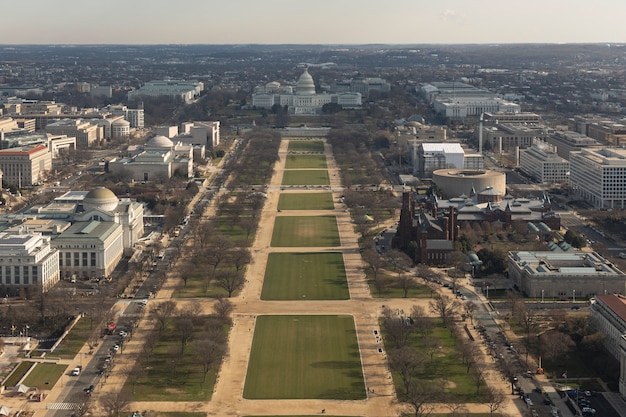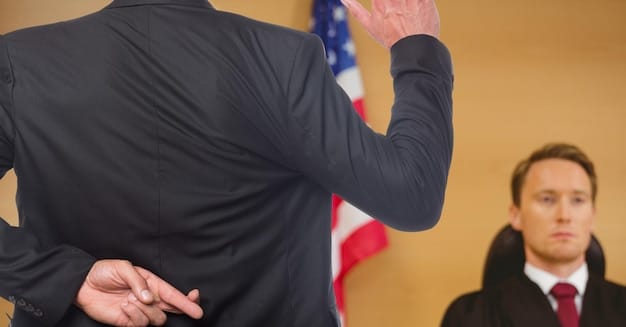US Diplomatic Strategies: Analyzing International Conflicts

US Diplomatic Strategies: Analyzing America’s Approach to International Conflicts involves a multifaceted approach, utilizing tools such as negotiation, sanctions, aid, and military intervention to protect its interests and promote global stability.
Understanding US Diplomatic Strategies: Analyzing America’s Approach to International Conflicts is crucial in today’s interconnected world, where conflicts can quickly escalate and impact global stability. This article explores the various strategies employed by the United States in navigating international disputes.
Introduction to US Diplomatic Strategies
The United States has long played a significant role in international affairs, often acting as a mediator, negotiator, and sometimes, an interventionist. Its diplomatic strategies are shaped by a complex interplay of national interests, global responsibilities, and domestic political considerations.
Diplomacy, in its essence, is the art and practice of conducting negotiations between representatives of states. For the US, this involves a range of tools from economic incentives to military deterrence. Let’s delve into the core elements of these strategies.
Key Elements of US Diplomacy
US diplomatic strategies are not monolithic; they vary depending on the nature of the conflict, the parties involved, and the desired outcome. However, some key elements remain consistent.
- Bilateral and Multilateral Engagements: The US engages in direct negotiations with individual countries (bilateral) and participates in international forums and organizations (multilateral) to address conflicts.
- Economic Leverage: Economic sanctions, trade agreements, and financial aid are frequently used as tools to influence the behavior of other nations.
- Military Deterrence: The US military presence and capabilities serve as a deterrent against potential aggressors, supporting diplomatic efforts with a credible threat of force.
- Soft Power: Cultural exchange programs, educational initiatives, and humanitarian aid are used to promote US values and build positive relationships with other countries.
In conclusion, the US employs a diverse range of diplomatic tools, adapting its approach to suit each specific conflict and leveraging both hard and soft power to achieve its objectives.

Historical Overview of US Diplomatic Approaches
The history of US diplomacy is marked by shifts in strategy, reflecting changing global dynamics and evolving American priorities. From isolationism to interventionism, the US has experimented with various approaches to international conflicts.
Understanding these historical trends provides valuable context for analyzing contemporary US diplomatic strategies. Let’s examine some key periods and their defining characteristics.
Early Isolationism and Gradual Engagement
In its early years, the US largely adhered to a policy of isolationism, avoiding entanglements in European conflicts. This approach, championed by figures like George Washington, aimed to protect the young nation from foreign interference.
However, as the US grew in economic and military power, it gradually began to play a more active role in international affairs. The Monroe Doctrine, for example, asserted US influence in the Western Hemisphere.
The Cold War and Containment
The Cold War era saw the emergence of a new diplomatic strategy known as containment, which aimed to prevent the spread of communism. This approach involved a combination of military alliances, economic aid, and covert operations.
Key initiatives like the Marshall Plan and the formation of NATO were central to the containment strategy. The US also engaged in proxy wars in Korea and Vietnam to check Soviet influence.
Post-Cold War Era and Humanitarian Intervention
The end of the Cold War ushered in a period of uncertainty and debate over the appropriate role for the US in the world. Humanitarian interventions, such as in Bosnia and Kosovo, reflected a growing emphasis on human rights and international norms.
However, the 9/11 terrorist attacks brought a renewed focus on national security and counterterrorism, leading to military interventions in Afghanistan and Iraq.
In summary, the US diplomatic approaches have evolved significantly over time, shaped by historical events, ideological shifts, and changing national interests. These historical lessons continue to inform current strategies.
Tools and Instruments of US Diplomacy
US diplomacy relies on a diverse toolkit of instruments, ranging from negotiation and mediation to economic sanctions and military intervention. The effective use of these tools requires careful calibration and a deep understanding of the specific context.
Let’s examine some of the most commonly used tools and instruments in US diplomacy.
Negotiation and Mediation
Negotiation is the cornerstone of diplomacy, involving direct talks between parties to a conflict. The US often acts as a mediator, facilitating dialogue and seeking to find common ground.
Successful negotiation requires skilled diplomats, clear objectives, and a willingness to compromise. The US has played a key role in mediating peace agreements in various regions, including the Middle East and the Balkans.
Economic Sanctions and Incentives
Economic sanctions are a powerful tool used to pressure countries to change their behavior. These can range from trade embargoes to asset freezes and travel bans.
- Targeted Sanctions: These focus on specific individuals or entities, minimizing the impact on the general population.
- Comprehensive Sanctions: These restrict trade and financial transactions across the board, potentially causing severe economic hardship.
- Economic Incentives: These include financial aid, trade agreements, and investment opportunities, offered in exchange for political or economic reforms.
Economic levers, both carrots and sticks, serve as critical components of US diplomatic strategy, influencing state actions and promoting desired policy changes.
Military Intervention and Deterrence
Military intervention is typically considered a last resort, but it remains an important tool in US diplomacy. The threat of military force can serve as a deterrent, preventing potential aggressors from taking hostile actions.
When intervention is deemed necessary, it can take various forms, from air strikes and special operations to large-scale ground invasions. The decision to use military force is always a complex one, weighing the potential benefits against the risks and costs.
In short, the US utilizes a combination of negotiation, economic tools, and military options to advance its diplomatic objectives, carefully weighing the implications of each approach.

Challenges and Criticisms of US Diplomatic Strategies
Despite its influence and resources, US diplomacy faces numerous challenges and criticisms. These include questions about its effectiveness, its consistency, and its ethical implications.
Understanding these challenges is essential for evaluating and improving US diplomatic strategies. Let’s explore some of the main criticisms.
Lack of Consistency and Double Standards
One common criticism is that US foreign policy suffers from a lack of consistency, applying different standards to different countries based on strategic interests. This can undermine US credibility and effectiveness.
For example, the US may criticize human rights abuses in one country while overlooking similar abuses in a strategic ally. This perceived double standard can fuel resentment and distrust.
Unintended Consequences of Interventions
Military interventions, even when well-intentioned, can have unintended and negative consequences. The interventions in Afghanistan and Iraq, for example, led to prolonged conflicts, instability, and humanitarian crises.
These unintended consequences can damage the US reputation, strain alliances, and create new security threats. Careful consideration of potential risks is therefore essential before undertaking military intervention.
The Rise of New Powers and Multipolarity
The rise of new powers, such as China and India, is challenging the traditional dominance of the US in international affairs. The world is becoming increasingly multipolar, with multiple centers of power and influence.
This shift requires the US to adapt its diplomatic strategies, seeking to build partnerships and coalitions to address global challenges. Unilateral approaches are less likely to be effective in a multipolar world.
In conclusion, US diplomatic strategies face significant challenges, including issues of consistency, unintended consequences, and the rise of new powers. Addressing these challenges requires a more nuanced and collaborative approach to international relations.
Case Studies: Successful and Unsuccessful Diplomatic Interventions
Examining specific case studies can provide valuable insights into the factors that contribute to the success or failure of US diplomatic interventions. These real-world examples illustrate the complexities and nuances of international relations.
Let’s analyze a few notable cases to draw lessons and inform future strategies.
The Cuban Missile Crisis (Successful)
The Cuban Missile Crisis of 1962 is often cited as a successful example of US diplomacy. President John F. Kennedy skillfully navigated a tense standoff with the Soviet Union over the placement of nuclear missiles in Cuba.
A combination of assertive diplomacy, a naval blockade, and back-channel negotiations led to the removal of the missiles and averted a potential nuclear war. This case demonstrates the importance of strong leadership, strategic communication, and a willingness to negotiate.
The Vietnam War (Unsuccessful)
The Vietnam War is widely considered a failure of US foreign policy. Despite massive military intervention and significant loss of life, the US was unable to achieve its objectives in Southeast Asia.
A combination of factors contributed to this failure, including a lack of understanding of local dynamics, a flawed strategy, and domestic opposition to the war. This case highlights the dangers of miscalculation and the importance of public support for military interventions.
The Iran Nuclear Deal (JCPOA) (Mixed)
The Iran Nuclear Deal, formally known as the Joint Comprehensive Plan of Action (JCPOA), is a more complex case. Negotiated by the Obama administration in 2015, the deal aimed to prevent Iran from developing nuclear weapons in exchange for sanctions relief.
While the deal was initially hailed as a diplomatic success, it faced strong opposition from conservatives in the US and abroad. The Trump administration withdrew from the JCPOA in 2018, reimposing sanctions on Iran. This case illustrates the challenges of maintaining international agreements in the face of domestic political divisions and changing geopolitical realities.
In summary, these case studies highlight the importance of careful planning, strategic communication, and adaptability in US diplomatic interventions. Success requires a deep understanding of the context, a clear set of objectives, and a willingness to learn from past mistakes.
The Future of US Diplomatic Strategies
Looking ahead, US diplomatic strategies will need to adapt to a rapidly changing world. The rise of new powers, the proliferation of new technologies, and the increasing interconnectedness of global challenges demand a more flexible and innovative approach.
Let’s explore some of the key trends and challenges that will shape the future of US diplomacy.
Strengthening Alliances and Partnerships
In an increasingly multipolar world, the US will need to strengthen its alliances and partnerships to address global challenges. This includes working with both traditional allies and emerging powers to find common ground and build consensus.
Multilateral institutions, such as the United Nations and the World Trade Organization, will also play a key role in facilitating cooperation and resolving disputes.
Embracing Digital Diplomacy
Digital technologies are transforming the way diplomacy is conducted. Social media, online platforms, and data analytics are becoming increasingly important tools for communication, engagement, and information gathering.
The US will need to invest in digital diplomacy, training its diplomats to effectively use these new tools and to counter disinformation and cyber threats.
Addressing Climate Change and Global Health
Climate change and global health crises, such as pandemics, are increasingly recognized as major threats to international security. Addressing these challenges will require global cooperation and innovative diplomatic solutions.
The US can play a leading role in promoting sustainable development, investing in renewable energy, and strengthening global health systems.
In conclusion, the future of US diplomatic strategies will depend on its ability to adapt to changing global dynamics, embrace new technologies, and address complex challenges such as climate change and global health. A more collaborative and innovative approach is essential for maintaining US leadership and promoting global stability.
| Key Point | Brief Description |
|---|---|
| 🤝 Negotiation | Direct talks and mediation to find common ground. |
| 💰 Economic Tools | Using sanctions and incentives to influence behavior. |
| ⚔️ Military Deterrence | Employing the threat of force to prevent aggression. |
| 🌐 Multilateralism | Working with alliances and international organizations. |
Frequently Asked Questions (FAQ)
▼
The primary goals include protecting US national interests, promoting global stability, preventing conflicts, and fostering economic prosperity. Diplomacy aims to achieve these goals through negotiation and collaboration with other countries.
▼
Economic sanctions are employed as a tool to pressure countries to change their behavior. These can take the form of trade embargoes, asset freezes, or travel bans. The US often uses targeted sanctions to minimize harm to civilian populations.
▼
Military intervention is generally considered a last resort, used when diplomatic efforts have failed. It can serve as a deterrent or be employed to protect US interests and allies. The decision to intervene militarily is complex and requires careful consideration.
▼
Alliances are crucial for sharing the burden of global leadership and addressing common threats. The US relies on alliances like NATO to provide collective security and to project power and influence around the world.
▼
Digital diplomacy involves using social media and online platforms to communicate with foreign audiences, engage in public diplomacy, and counter disinformation. It enables the US to bypass traditional channels and directly engage with people around the world.
Conclusion
In conclusion, US Diplomatic Strategies: Analyzing America’s Approach to International Conflicts is a complex endeavor shaped by history, national interests, and global dynamics. By understanding the tools, challenges, and future trends in US diplomacy, we can better appreciate the role of the US in shaping the international landscape and promoting peace and security.





